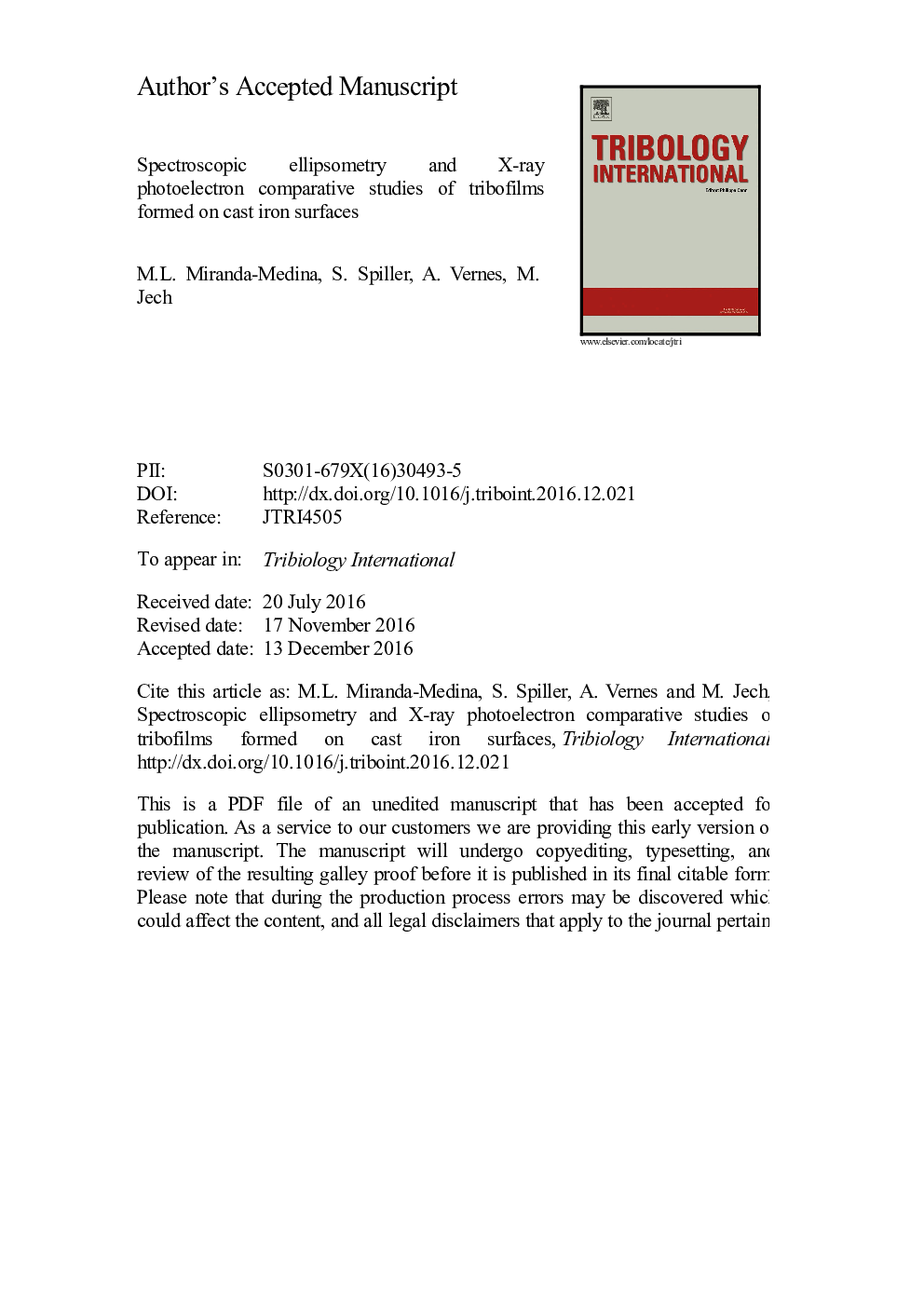| Article ID | Journal | Published Year | Pages | File Type |
|---|---|---|---|---|
| 4985785 | Tribology International | 2017 | 22 Pages |
Abstract
In this paper, tribofilms generated in a model piston ring - cylinder liner setup within a tribometer environment were investigated by surface and optical techniques. The cylinder liner material was grey cast iron of an automotive grade, while the piston ring material was nitrided steel and the lubricant consisted of fully formulated oil with zinc dialkyldithiophosphate additives. X-ray photoelectron spectroscopy was used to determine the chemical composition of the resulting tribofilms, and as comparative technique for the evaluation of their thicknesses. Ellipsometrical measurements were modelled by using an effective medium approximation by including depolarisation effects to describe the optical properties, thickness and uniformity of the films. The adjustment of the effective medium model on basis of the X-ray photoelectron spectroscopy findings resulted in a good agreement between the estimations for tribofilm thicknesses in both experimental methods.
Keywords
Related Topics
Physical Sciences and Engineering
Chemical Engineering
Colloid and Surface Chemistry
Authors
M.L. Miranda-Medina, S. Spiller, A. Vernes, M. Jech,
